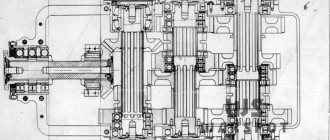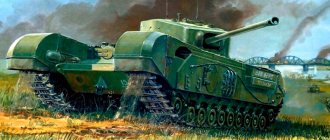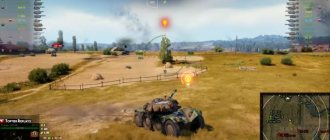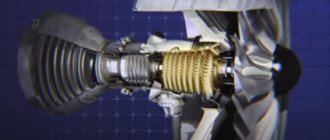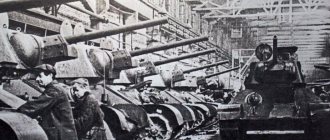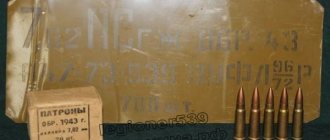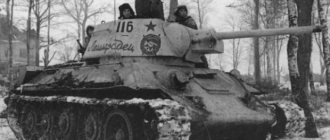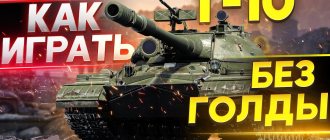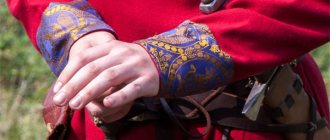The weight of the tank ranges from 26 to 188 tons, depending on the thickness of the armor and the nature of the combat equipment.
A tank is an armored tracked vehicle with cannon armament. There are two groups of tanks:
The weight of the tank ranges from 26 to 188 tons.
- Combat (basic). The main characteristics of such models are impressive firepower, high resistance to damage and excellent movement speed.
- Lungs. Used as a quick reaction weapon, as well as for reconnaissance purposes. As a rule, such vehicles have less power and thickness of protective armor. Light tank models can be transported to their destinations using water, air or rail transport.
Let's compare the mass of several models of combat vehicles.
How much does the T-90 tank weigh?
The model is an improved version of the T-72 tank. It has high combat and technical characteristics that allow it to withstand battles in any climatic conditions.
The weight of the T-90 tank is 46.5 tons.
The weight of the T-90 tank is 46.5 tons. The combat vehicle is equipped with a 125-mm launcher designed to hit targets of all types, as well as an sighting system and a thermal imager. The tank has a high rate of fire, excellent speed (60 km), and the crew includes three people.
Real monsters: 12 biggest tanks of all time
Photo: Pixabay.com
Modern tank building is aimed at developing maneuverable and compact vehicles, with firepower and high maneuverability coming to the fore. While earlier designers tried to create large tanks with thick armor. They were considered the most reliable and invulnerable. Such armored vehicles will be discussed in our article.
We present a rating of the 12 largest tanks in the world, compiled based on data from the hotcars.com portal.
How much does the T-34 tank weigh?
T-34 is a real military legend. Production of the first "thirty-fours" began in 1940, and by the beginning of 1941 the USSR had about 1,225 units of equipment in service. The T-34 model tank changed and improved its technical characteristics several times during the war years. Therefore, the mass in different years of production was also unequal:
- Issue 1940 – 26.3 t
- Issue 1941 – 28 t
- Issue 1942 – 28.5 t
- Issue 1943 – 30.9 t
At the same time, in the total mass of the combat vehicle, the weight of the tracks takes up about 1150 kg. When comparing the weight of the combat turret of a tank from 1940 and 1942, there is a noticeable tendency to increase - from 3200 to 3900 kg. The T-34 crew includes a gunner-radio operator, a driver, a loader and a commander.
T-14 "Armata"
Today, the best tanks in Russia 2021 are the T-14 Armata, which are even called the coolest in the whole world. Promising technology has an uninhabited tower. It is equipped with a single ESU T3, which automatically connects all objects together with a software package. First of all, Russian tanks armed with the Armata are used as a tactical unit and follow reconnaissance. The vehicle is capable of launching its own drone, which will engage in reconnaissance. The vehicle is installed on the Armata chassis; it was first shown in 2015 at the Victory Day parade.
Russian 2021 Armata are equipped There is also the Malachite dynamic protection in the 4th generation, which can reflect shots from any powerful grenade launchers with an accuracy of 95%.
Modern Russian tanks have a number of advantages over all competitors. For example, during their development they used a universal platform, used an improved and even innovative active protection system; it is possible to use the T-14 with an uninhabited turret. The tank, weighing 48 tons, is capable of reaching road speeds of 90 kilometers per hour, with a powerful engine of 1.6 thousand horsepower. Innovative protection Afghanite and Malachite have also been installed. There is a Pterodactyl drone launch system. How many T-14 tanks do Russia have today? approximately 20 units, but the contract was signed for 100.
- Weight: 55 t.
- Length: 8,732 mm
- Height: 2,700 mm
- Width: 3,900 mm
- Gun caliber: 125 mm
- Engine power: 1,800 l. With.
- Speed: 51 km/h
How much does a Maus tank weigh?
The Maus tank was created in 1943 and weighed about 188 tons. This is a real “heavyweight” of German tank building, the length of its gun reached 2.5 m. And the total length of the combat “Mouse” was about 11.5 m! The vehicle's ammunition load included two twin cannons (128 mm and 75 mm). The capacity of the Maus fuel tank is 2650 liters. The number of crew members is five people.
This is interesting!
On these pages you can find out: How much a bear weighs How much gold weighs How much a sumo wrestler weighs How much a cloud weighs How much a piano weighs
Despite the impressive size and weight of the Maus tank, almost all the free space inside was occupied by numerous instruments and parts. So the crew of the combat vehicle had to be located “on a residual basis.”
According to the results of field tests, the Maus achieved good performance: a speed of 20 km/h, overcoming a rise, a vertical obstacle 76 cm high at an angle of 30 degrees, crossing a water trench 2 m wide.
True, all the efforts spent on creating and improving the types of this model were in vain. At the end of 1944, by order of Hitler, work on heavy tanks was stopped, and in the spring of 1945, prototypes of the 205 type were prepared for defense of the training ground in the event of capture by the Red Army. After the war, the two surviving Type 205 tanks were transported to Leningrad, and from there to the tank training ground in Kubinka.
Top 10 heavy tanks in the world
Top 10 heavy tanks in the world
Below, TOP 10 largest tanks by weight and size in the world. Almost all super heavy tanks were built or developed during World War II.
Above, photos of the actually created gun, which was supposed to be installed on the Monster tank
Landkreuzer P. 1500 Monster
Germany, 1942, 42 meters, weight 1500 tons, crew 100 people
Landkreuzer P. 1000 Ratte
Landkreuzer P. 1000 Ratte
Germaniz, 1942, 35 meters, weight 1000 tons, crew 20 people
Ratte looked a lot like a monster. It was also developed in 1942 and was also discontinued a year later. Unlike the Monster, the Ratte was to be armed with a warship turret with two 280mm cannons. Other weapons on the Ratte include one 128 mm cannon, eight 20 mm anti-aircraft guns and several 15 mm machine guns.
Tank VIII Maus is the largest tank ever built. It is small compared to the Monster and Ratte, but is still three times larger than a regular tank. Design was completed in 1942 and production began the same year, but only two tanks were built before the end of the war.
The tanks were armed with one 128 mm gun and one 75 mm gun.
The super heavy tank is very similar to the VIII Mouse tank. This project was started in 1942, but not all tanks were built. One tank hull was built in 1944, but the turret was not installed until after the war.
The E-100 Tiger Mouse was to use the same turrets as the VIII Mouse tank. Thanks to its lighter weight, this tank should be faster and more effective on the battlefield than the VIII Mouse tank.
FCM F1 is the heaviest and largest tank of non-Nazi origin. It was intended to replace the Char 2C, which was one of the heaviest tanks that had never been used in combat. Unfortunately, France was defeated before the FCM F1 project was completed, so none of these tanks were built.
The FCM F1 was supposed to be armed with a 90 mm cannon, a 47 mm cannon, and six machine guns. It's worth noting that this tank was 10 meters long, but only just over 3 meters wide, so it could have been transported by rail.
France, 1940, 11 meters, weight 139 tons, crew 9 people
OI, this is Japan's attempt to create a super heavy tank. There are reports from various sources that one model was completed and sent to Manchuria during World War II, but this is highly unlikely and is more likely to be rumor than truth. OI was probably canceled like most other super heavy tank projects.
OI was to have three turrets. The main turret had a 105 mm cannon, the right turret had a 37 mm cannon, and the left turret had three machine guns.
Japan, 1944, 10 meters, weight 130 tons, crew 11 people
The K-Wagen was one of the first attempts to create a super-heavy tank. Again, it was a crazy plan by engineers from Germany, but this time it was before the Nazi era.
Germany, 1917, 13 meters, weight 120 tons, crew 27 people
The T-28 was developed by the American military during World War II. It was to be used to break through German defenses and a possible invasion of Japan.
The T-28 did not have a normal turret, so it could be classified as a tank destroyer, self-propelled gun, and not a super heavy tank. For this reason, it was renamed from T-28 to T-95, and then back again.
It was armed with one 105 mm cannon and a single machine gun. It had 4 tracks instead of the traditional 2.
USA, 1945, 11 meters, weight 95 tons, crew 8 people
TOG2 was the largest British tank ever built. Just like most other super-heavy tanks, it was developed during World War II. One prototype was built in 1941, but the project was shelved and TOG2 never saw combat.
TOG2 was armed with one 76 mm cannon.
Great Britain, 1940, 10 meters, weight 80 tons, crew 8 people
Another British super heavy tank. The tank was also developed during World War II, but was never put into production.
The A39 Turtle was armed with a 96 mm cannon and three machine guns.
Why did the army abandon heavy tanks?
Interestingly, almost all of the tanks in the top 10 were built during World War II. What made engineers try to build such monsters at this time, and why weren't such tanks built until now?
The main reason for creating a super-heavy tank was immunity from enemy fire. The super heavy tank had thick armor that would have been impenetrable to most WWII guns.
There are several reasons for abandoning these tanks:
— cumulative shells appeared. Which could penetrate armor up to 500 mm or even more;
- the tank could be hit with the help of aircraft;
— poor maneuverability of the tank during advance and retreat, which limited its use on the battlefield.
Another problem was the transportation of super-heavy tanks. Most were too large to be transported by rail, so they had to rely only on their own propulsion abilities. The problem is that most of them moved extremely slowly, so they could not reach the battlefield at the right time.
In addition, super-heavy tanks destroy roads. Therefore, they would have to drive over rough terrain, which would further slow down the movement.
Heavy tank IS-2 (video):
Heavy tank Grote R-1000 (video):
Heavy tanks IS-3, IS-7 (video):
Source
How much does the AT-2 tank weigh?
The World of Tanks game is a great opportunity to at least “virtually” control tanks and other military equipment. The AT 2 tank is a fifth-level combat unit of the British development branch (tank destroyer class).
General characteristics of the “combat monster”: weight 44 tons, 57 mm gun, 26 rounds per minute, speed 20 km/h. The crew consists of four people. The tank can be used to push the flanks of enemy units. However, you should take care of your cover from your allies. The accuracy of the AT 2's gun is low, so using the tank for long-range attacks is not recommended.
The weight of the AT-2 tank is 44 tons.
Now you know how much the tank weighs, and as you can see, its weight depends on the modification. In addition, to determine the weight of a tank, you do not need to weigh it, but rather calculate the mass, taking into account the density of the metal and the weight of the combat equipment.
Why did the military abandon large tanks?
Most of the representatives of our rating were created during the First World War and the Great Patriotic War. Designers tried to develop vehicles with reliable protection from enemy fire. Large tanks had thick armor that was impervious to most guns of the time.
There are several reasons for abandoning super-heavy large armored vehicles:
There were also problems with transportation. The cars were too massive to be transported by rail. Therefore, the tanks had to be driven under their own power. Most of them had a low speed of movement and did not have time to arrive at the right time on the battlefield. In addition, the heavyweights destroyed asphalt roads, so they had to move over rough terrain, and this slowed down the movement even more.
Source
The largest tanks of the USSR
Tank building in the Soviet Union developed actively. New tanks that entered service in the first years of the war with the Third Reich were quickly lost; they did not meet quality standards, burned out quickly, and were vulnerable. Engineers worked to improve the machines in real time.
Object 279
Under the leadership of leading designer Troyanov, the USSR heavy tank Object 279 was released in 1957. The main military task is to work in difficult to reach conditions. Combat weight - 60 tons. The frontal part had excellent protection, and was armed with a KPVT machine gun and a 130-mm cannon.
The largest tank in the USSR
The tracked part had shortcomings that could not be eliminated. At the same time, the object was moving along the highway at a speed of 55 km/h, the specific pressure on the ground was the same as that of light tanks. Did not enter service.
IS-4
The post-war serial IS-4 was produced in Chelyabinsk since 1947. It replaced the outdated IS-3. Protected by cast and rolled steel armor. During production, they were modernized several times. Main disadvantages:
- poor maneuverability;
- low traffic;
- unreliable transmission.
In the 60s, the 60-ton machine was finally written off.
IS-7
An experimental tank developed for the army. Technical design solutions were successfully used subsequently. Hull dimensions without gun: 7.38 * 3.4 * 2.48 meters. Technically it was an improved IS-3.
Tank IS-7
It was equipped with a large turret and an improved S-70 rifled gun, the prototype of which was a ship-based firing system.
IS-1 and IS-2
The IP project was created to glorify the name of Joseph Stalin during the war. Russian heavy tanks of that time had a large number of shortcomings, but they went all the way from Kursk to Berlin and distinguished themselves during assault battles.
A column of IS-2 tanks from the 1st Ukrainian Front is heading towards Berlin. 1945
IS-2 weighing 46 tons was used until 1995. This is a legendary fighting machine. In terms of the combination of weapons and armor, it was superior to all vehicles of that time.
KV-1
Named in honor of Kliment Voroshilov, it is equipped with durable steel homogeneous armor. Serial production began in 1940. On the highway he moved independently at a speed of 30-34 km/h.
KV-1 - one of the successful heavy tank projects in the USSR
It had an individual torsion bar suspension, and in the battle with the Germans it surprised us with its impenetrable armor. Could fire 111 shots from the L-11 cannon.
By
Peculiarities
For the first time in the history of Russian tank technology, steering wheel-based control with an automatic gear shift system was used. At the same time, it is also possible to switch to manual gear shifting. To improve maneuverability and mobility on the T-90AM, the developers installed a new combined night vision device and a rear-view camera for the driver. The external surveillance system allows the crew commander to monitor the surrounding area using four television cameras that provide all-round visibility and operate even in low light conditions. Comfort in the control compartment and fighting compartment is created by the optional air conditioning system.
T-90AM in export version
The new model was also equipped with a more powerful 1130-horsepower V-93 monoblock power plant, created on the basis of the V-92S2F2. In addition to the main engine, the T-90AM was also equipped with an auxiliary diesel generator set, which is designed to operate while parked when the main engine is turned off. This significantly reduces fuel consumption and increases the service life of the main engine; in addition, this innovation reduces the visibility of the tank in the infrared range, which is important.
SUPPLY SYSTEMFuel used: a) in summer……………Summer diesel fuel (summer diesel fuel) b) in winter……………Winter diesel fuel (winter diesel fuel)
Fuel tanks
Quantity: a) Main (internal) onboard. . 6 pcs. b) Basic (internal) feed. 2 pcs c) additional (external)…. 3 pcs
Capacity: a) main (eight tanks)…. 545l b) additional (three tanks) ....270l
Fuel pump
Type……………….Kolovratnaya Brand…………….BNK-12B Ratio of pump speed to crankshaft speed……0.786 Fuel pressure supplied by the fuel priming pump in operating mode, measured after the fuel filter…………… 0.5—0.7 kg/cm2
Fuel pump Type……………….Twelve-plunger Brand………………NK-1 Numbering order of pump sections….From the fighting compartment to the transmission compartment Sections serving the left group of cylinders……………..Even Sections serving the right group of cylinders…………….. Odd Numbered operating order of sections. ……..2—11—10—3——6—7—12—1 — 1—9—8—5 Fuel supply advance angle…..31 — 33° Direction of rotation……….Counterclockwise (if look at the engine from the side of the fighting compartment) The ratio of the number of revolutions of the fuel pump shaft to the number of revolutions of the crankshaft………………0.5
Speed controller Type……………….Centrifugal, all-mode with fuel supply corrector Brand………………RNA-4
Nozzle Type……………. … Closed Injector spring tightening……. 200 kg/cm2
Air cleaner Type……………….Dry centrifugal Brand…………….Multicyclone Quantity…………..2 Location………………..In the transmission compartment
LUBRICATION SYSTEM
Type……………….Combined circulation (pressure and spray) with “dry sump”
Oil used a) in summer……………Aviation oil MK b) in winter…………Aviation oil MZ Filling capacity of the system……105 l Normal amount of oil measured in tanks. . . .80 l (40 l in each tank) Minimum permissible amount of oil in each tank…………… 20 l
Oil tanks
Quantity: a) main………….2 pcs. b) additional external…. 1 PC. Location of the main tanks……Between the bulwarks and the armor on both sides of the engine
Oil pump Type……………….Gear, three-section, one injection section and two pump-out sections Ratio of pump shaft revolutions to crankshaft revolutions. ..1,725 Oil pump capacity at 1600 crankshaft rpm……….3750 l/hour…..
Oil filter Type……………………..Wire-shell Brand………………"Kimaf" Quantity…………..1 Location…………On the upper half of the engine crankcase
Oil cooler Type……………….Tubular Quantity……………1 Location………………..on the left water radiator
Oil pressure In operating mode after passing through the filter………… 6-9 kg/cm2 At idle at a steady minimum engine speed………..Not lower than 2 kg/cm2 Oil temperature when leaving the engine……Not higher than 105 degrees .WITH
COOLING SYSTEM
Type……………….Water, forced filling tank. ……… 75 l Outlet water temperature…….Not higher than 105 degrees. C Incoming water temperature…….Not lower than 40 degrees. WITH
Fan…………….Centrifugal (attached to the flywheel)
Radiators Type………………..Tubular Quantity……………2 Location………. At the sides on both sides of the engine Cooling surface (both radiators) 107.36 m2
Water pump Type…………….Centrifugal Ratio of water pump roller speed to crankshaft speed………………………..1.5 Water pump capacity at 2550 rpm impeller…….. 500 l /min
STARTING SYSTEM
Main starting system………Electric starter Auxiliary (steam) starting system…. Compressed air Maximum air pressure in cylinders 150 kg/cm2
The pressure of the air entering the air distributor is not higher than………….90 kg/cm2 not lower: a) in summer…………………………..40 kg/cm2 b) in winter…………..65 kg/cm2 The moment at which air begins to be supplied to the engine cylinders in degrees of crankshaft rotation angle……. 6°±3° BTDC during compression stroke
7. TRANSMISSION MAIN FRICTION
Type………………Multi-disc, dry Material of friction surfaces of discs. . . Steel Number of driving disks…….11 Number of driven disks……11 Number of springs………16 Clutch release mechanism. …… Ball Maximum force required to disengage the clutch…… 25 kg Connection to the gearbox….. Through a gear clutch Weight of the main clutch……….120 kg
TRANSMISSION
Type……………….Manual, three-way, five- or four-speed Number of gears: five-speed gearbox. . Five forward and one reverse four-speed gearbox. . Four forward gears and one reverse
Gear ratios:
| In a conical pair | 1,859 | 1,859 |
| In first gear | 5,57 | 5 |
| In second gear | 2,6 | 2,39 |
| In third gear | 1,855 | 1.45 |
| In fourth gear | 1,215 | 0,756 |
| In fifth gear | 0,756 | — |
| In reverse gear | 4,95 | 5,35 |
Lubrication: Type…………….. By splashing Type of oil: a) in summer…………Aviation oil MK b) in winter…………Aviation oil MZ Oil quantity………… 10 l Gearbox weight……….. 340 kg
SIDE CLUTCHES AND BRAKES
Type of clutches………….Multi-disc, dry Quantity…………..2 Material of friction surfaces of the disks. . . Steel Thickness of friction disc set. … 137.6 ± 1 mm Number of driving disks……..From 17 to 21 (depending on their thickness) Number of driven disks……..From 18 to 22 (depending on their thickness) Number of springs………… 18 Shutdown mechanism………. Ball Maximum force on the lever handle required to disengage the side clutch……………20 kg Type of brakes………Band, floating, with cast iron linings Outer diameter of the driven drum. . . 500 mm Belt width………….. 200 mm Side clutch weight………140 kg
ONBOARD. TRANSMISSIONS
Type………………..Single-stage reduction gear Quantity……………. 2 Gear ratio……….5.7 Lubrication: Type……………….Splashing Type………………In summer, mixture: 70% MK aviation oil + 30% constalin. In winter, mixture: 70% MZ ania oil + 30% constalin. Amount of lubricant in each final drive….. 3.6 kg Weight of one final drive……. 280 kg
8. CHASSIS
Type of propulsion…………..Crawler. Arrangement of driving wheels. ……Rear Drive wheels Type of gearing………….Red Wheel type……………Cast or with stamped disks Outer diameter……….. 634 or 650 mm Wheel weight (with stamped disks)…. 150 kg
TRACK CHAIN
Type………………..Small link Quantity…………… 2 Number of tracks in each chain. . . . 72, of which 36 with a ridge and 36 without a ridge Connection of tracks………… With fingers having a head facing the body of the T-34-85 tank Track pitch……………172 mm Track width………….. 500 mm Track chain tensioning method. . . . By turning the crank of the guide wheel. Method of turning the crank…….. With a worm pair. Weight of one caterpillar assembly…….. About 1,070 kg
GUIDE WHEELS (SLAZY)
Type…………..Cast Quantity……………. 2 Outer diameter………… 500 mm Weight of one idler assembled with crank…… 220 kg
TRACK ROLLERS
Type………………..With external rubber band Number of rollers per side……….5 pcs. Roller diameter…………..830 mm Weight of one roller (without balancer)…..125 kg Weight of one roller with balancer………..About 200 kg
SUSPENSION
Type………….Individual spring Arrangement……………Inclined Number of springs in the suspension of each roller…….2 Arrangement of springs at the front road wheels. . . .Concentric arrangement of springs of the second, third, fourth and fifth road wheels. . . One above the other
Roller travel: Up……………..140 mm Down……………..The front roller has 75 mm, the second, third, fourth and fifth rollers have 115 mm. Front roller suspension weight……….About 55 kg Suspension weight second, third, fourth and fifth rollers………….About 40 kg
9. Electrical equipment
Wiring system………….Single-wire (emergency lighting is two-wire) Mains voltage…………24 V and 12 V
SOURCES OF ELECTRICITY
Electric generator Type………………Shunt four-pole dynamo Brand………………..GT-4563 A Power…………1,000 Vm Voltage…………..24 V Ratio of generator shaft speed to crankshaft speed shaft…………1.5 Drive……………….Elastic coupling (rubber) Direction of rotation………Clockwise (when viewed from the drive side) Regulator relay…………..RRA-24F
Rechargeable batteries Brand……………..6-STE-128 Type……………..Starter, acid Capacity……….128 ampere-hours Number of batteries………4 Voltage of one battery………… 12 v Start of charging………….At 600-650 rpm of the crankshaft
ELECTRICITY CONSUMERS
Electric starter Brand……………..ST-700 Power……………15 hp Voltage…………..24 V
Electric motor for the turret rotation mechanism Brand…………MB-20V Type……………..Serial, four-pole Power……………1350 W Voltage…………..20 V Speed (maximum)…..5800 rpm Current consumption…….. 90–120 a Gear ratio from the armature shaft to the tower ring……1389
Fan electric motor Brand …………..MB-12 Quantity…………..2 Power ……………19 Vm Speed………….1500 rpm Voltage……………12 V
Lighting fixtures Headlight………………1 (left) with two lamps of 25 W and 5 W Signal lamp………..1 (rear) with a lamp of 5 W Lighting of the electrical panel … 1 lamp of 5 W Internal lighting… …….2 lampshades with 10 W lamps Transmitter lighting………1 5 W lamp Radio station lighting……..2 0.15 W lamps Inclinometer scale lighting……1 10 W lamp
Mark's electrical signal……………. VG-4 (or SM-06 or GF-12T) Power consumption…….. 60 W
10. means of external and internal communication
RADIO STATION
Type………………Short-wave transmitting and receiving, simplex, telephone Brand………………..9-RS Operating range (telephone): a) on the go…………..15 km b) in a parking lot…… ……25 km
Fixed wave range: a) transmitter………..No. 160–225 b) receiver………….No. 150–240
INTERNAL NEGOTIATION DEVICE
Brand………………TPU—3—BIS-F Number of devices………. 3 Of them: No. 1……………For the commander of gun No. 2……………For the commander of tank No. 3……..For the driver
OBSERVATION DEVICES
Periscope viewing devices Quantity…………… 3 Of these: for the tank commander in the commander’s cupola………..1 pc. the gun commander has a gun in the roof of the turret…. 1 at the loader in the roof of the tower.... 1 Periscopic instruments for the driver……………..2 Inspection slits in the commander’s cupola……. 5
11. Means of camouflage (Tank smoke device TDP)
Type……………….MDSh (marine smoke bomb) Quantity……………. 2 Location……………On the rear armor plate Launch method. …………Electric igniter
